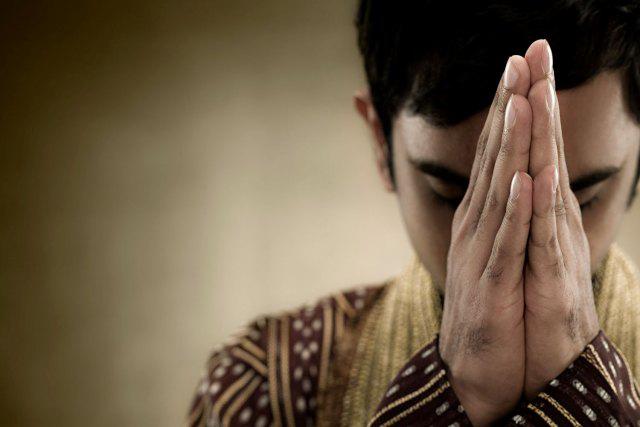 The fact remains that a human being, whoever he or she may be, is not really complete, perfect and strong. And there are times when one feels weak, does not know, is uncertain about the future and experiences fear. This happens in everyone's life. These are the moments when one turns the eyes up to God and prays. These may be very short and very rare or long and unending.
The fact remains that a human being, whoever he or she may be, is not really complete, perfect and strong. And there are times when one feels weak, does not know, is uncertain about the future and experiences fear. This happens in everyone's life. These are the moments when one turns the eyes up to God and prays. These may be very short and very rare or long and unending.But it is true that human beings have limitations. We constantly go through pressures and stress, unexpected things keep happening. There are uncertainties about the future. There are moments when we are totally in doubt, totally rattled, and we seek help. It may be momentary but this is an inborn trait. An animal can only run away from the problem, get frightened, whereas a human being thinks. Somehow, that deep-seated belief is there in a human being, that there is something larger that is governing this universe. Even the worst atheist would not deny it. This entire universe, the way in which it functions, there has to be something behind it. Call it law, God, or anything else.
 So, when we are in a terrible condition, we resort to that feeling at that moment. But rather this should be cultivated consciously, so that during the day, we do shed our fears and worries for a little while. But we don't do it repeatedly during the day. We do it just once or few times a day. The Hindus do their Pooja, the Muslims do their Namaaz, the Christians go to church for prayers.
So, when we are in a terrible condition, we resort to that feeling at that moment. But rather this should be cultivated consciously, so that during the day, we do shed our fears and worries for a little while. But we don't do it repeatedly during the day. We do it just once or few times a day. The Hindus do their Pooja, the Muslims do their Namaaz, the Christians go to church for prayers.Human being requires to pray regularly and if it is consciously done, it is better; otherwise, wrong thinking starts. One starts to think in extremes, gets terribly frightened.
 She had lost hope. This should not happen. Some little reassurance should come. Praying, not for hours, but periodically, the reassurance or the faith that there is something larger that governs this universe must be strengthened.
She had lost hope. This should not happen. Some little reassurance should come. Praying, not for hours, but periodically, the reassurance or the faith that there is something larger that governs this universe must be strengthened. 













